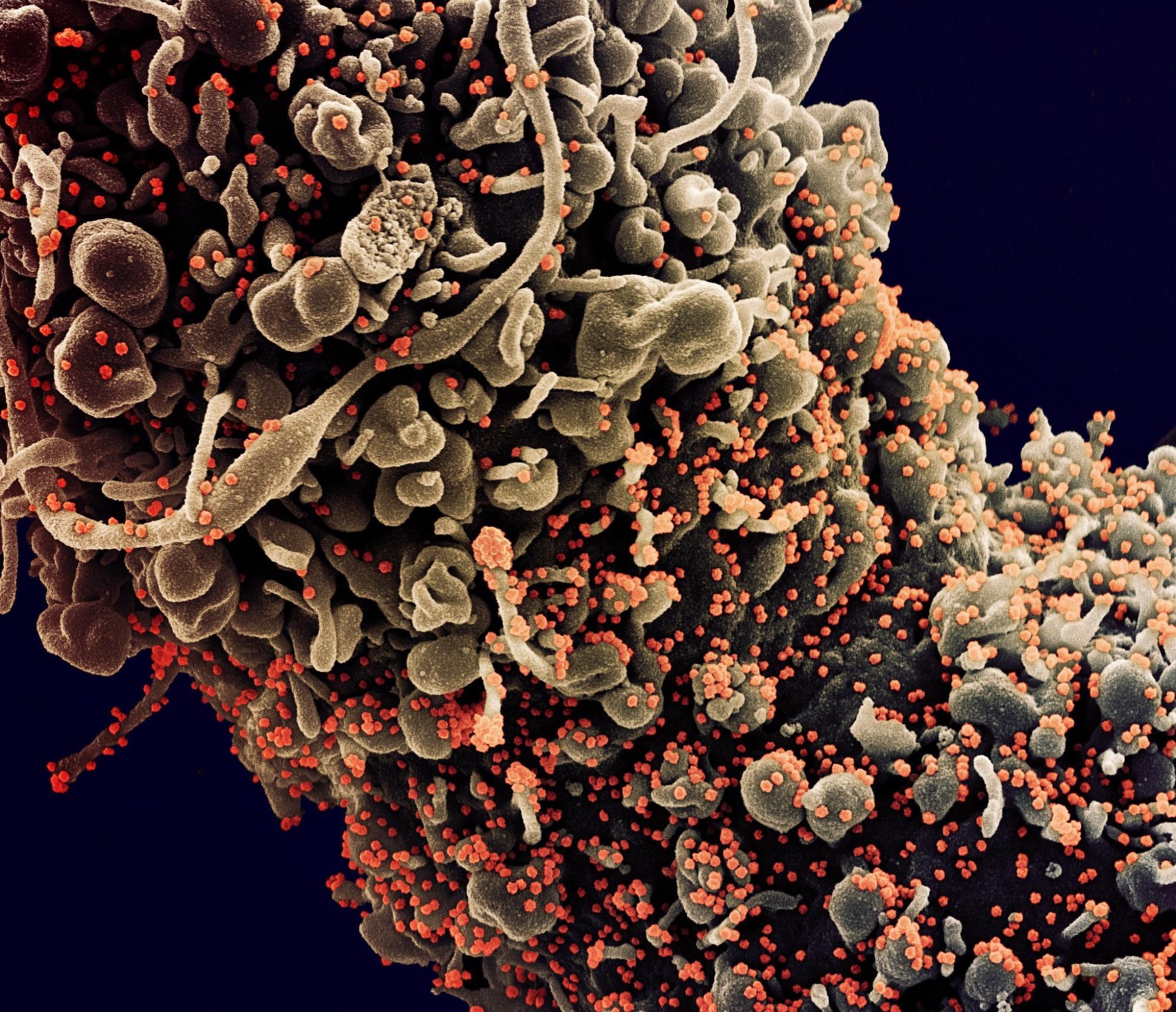Although the majority of individuals who are infected with the severe acute respiratory syndrome coronavirus 2 (SARS-CoV-2) will remain asymptomatic, they are still capable of transmitting the virus the others. In addition to the widespread prevalence of asymptomatic carriers, the coronavirus disease 2019 (COVID-19) can also be difficult to diagnose, as those who are asymptomatic often experience symptoms similar to both the flu and pneumonia.

Study: PD-LAMP smartphone detection of SARS-CoV-2 on chip. Image Credit: NIAID
Diagnosis of COVID-19
To date, the United States Food and Drug Administration (FDA) has granted emergency use authorization (EUA) for both nucleic acid amplification tests (NAATs) and serological assays to diagnose COVID-19.
Although quantitative reverse-transcription polymerase chain reaction (qRT-PCR) is the gold standard for COVID-19 diagnoses, this assay is a labor-intensive approach that requires skilled workers, specialized equipment, and costly reagents.
Isothermal nucleic acid amplification tests (iNAATs) are an alternative to traditional RT-PCR assays. Due to the capacity to amplify DNA without heat cycling, INAAT-based diagnostics do not require the use of costly equipment or skilled personnel. W
With fluorescent, colorimetric, or electrochemical read-outs, reverse transcriptase loop-mediated isothermal amplification (RT-LAMP) enables sensitive, quick, and reliable identification of nucleic acids in under an hour. As compared to RT-PCR, RT-LAMP amplifies specific ribonucleic acid (RNA) into 109 copies while being more resistant to inhibitors.
Smartphone imaging technology paired with RT-LAMP
In a recent Analytica Chimica Acta study, researchers describe the use of RT-LAMP in combination with particle diffusometry (PD), which is a smartphone imaging technique, to detect SARS-CoV-2 in crude saliva samples within 35 minutes with a limit of detection (LOD) of 30 virus particles/µL.
In the current study, the authors used a portable polyethylene terephthalate (PET) heater coated with indium tin oxide (ITO) for on-chip isothermal amplification. Notably, ITO-PET has previously been utilized for continuous-flow PCR, which involves various heating areas as the sample flows through the flow-through device and is subsequently evaluated outside of it. By creating a low-power PD-LAMP that allows for direct isothermal amplification on the chip, the researchers eliminate the need to transfer the sample from a tube, thus significantly reducing the risk of cross-contamination.
For greater sensitivity, the authors created new primers that target non-structural protein 3 (nsp3), which is a conserved region within the SARS-CoV-2 ORF1ab gene. These primers were then combined with other primers that target the N2 region of the SARS-CoV-2 nucleocapsid (N) gene.
Taken together, these primers are capable of amplifying genomic RNA in less than 30 minutes with no negative amplification. The experiment was run five times for 30 minutes each time, yielding a LOD of 75 copies of genomic RNA (gRNA) per reaction.
Study findings
The researchers first confirmed that their PD-LAMP system did not cause significant cross-reaction with other viruses. Importantly, the researchers observed that the viscosity of saliva minimizes the diffusion coefficient of the solution, thus causing RT-LAMP amplification to vary between samples.
As a result, before testing on-chip, the researchers amplified SARS-CoV-2 guide RNA (gRNA) in a tube and utilized gel electrophoresis for secondary validation to identify the highest concentration of saliva that may be used in an RT-LAMP assay. These studies confirmed that saliva could be added at a final was added at final concentrations of 8% and 10% in the 20 µL reaction.
Both SARS and MERS, which acted as the negative controls, were added to the reaction at a final concentration of 1.6x104 virus particles/20 µL reaction. Comparatively, SARS-CoV-2 virus particles were added at a final concentration of 5x103 - 5x101 virus particles/20 µL reaction for on-chip testing. The chips were heated in the ITO-PET heater for 35 minutes before being examined using PD. In comparison to the positive samples, significant variation was observed between the controls and the positive samples.
For both 8% and 10% saliva, PD gave a decreased diffusion coefficient for positive samples when compared to negative controls, thereby demonstrating that RT-LAMP successfully created amplicons for positive samples on-chip to accurately detect the presence of SARS-CoV-2. In fact, SARS-CoV-2 detection with PD-LAMP yielded a LOD of 50 particles/20 µL reaction in both 8% and 10% saliva samples.
Implications
The results of the current study demonstrate the diagnostic application of their PD-LAMP technology on a portable ITO-PET heating platform.
Even if other infectious viruses are present within the sample, this smartphone application is capable of confirming that any given sample is negative for SARS-CoV-2. Furthermore, the researchers demonstrated that their RT-LAMP technology could successfully achieve LODs that are comparable to those achieved through RT-PCR.
Journal reference:
- Colbert, A. J., Lee, D. H., Clayton, K. N., et al. (2022). PD-LAMP smartphone detection of SARS-CoV-2 on chip. Analytica Chimica Acta 1203. doi:10.1016/j.aca.2022.339702.